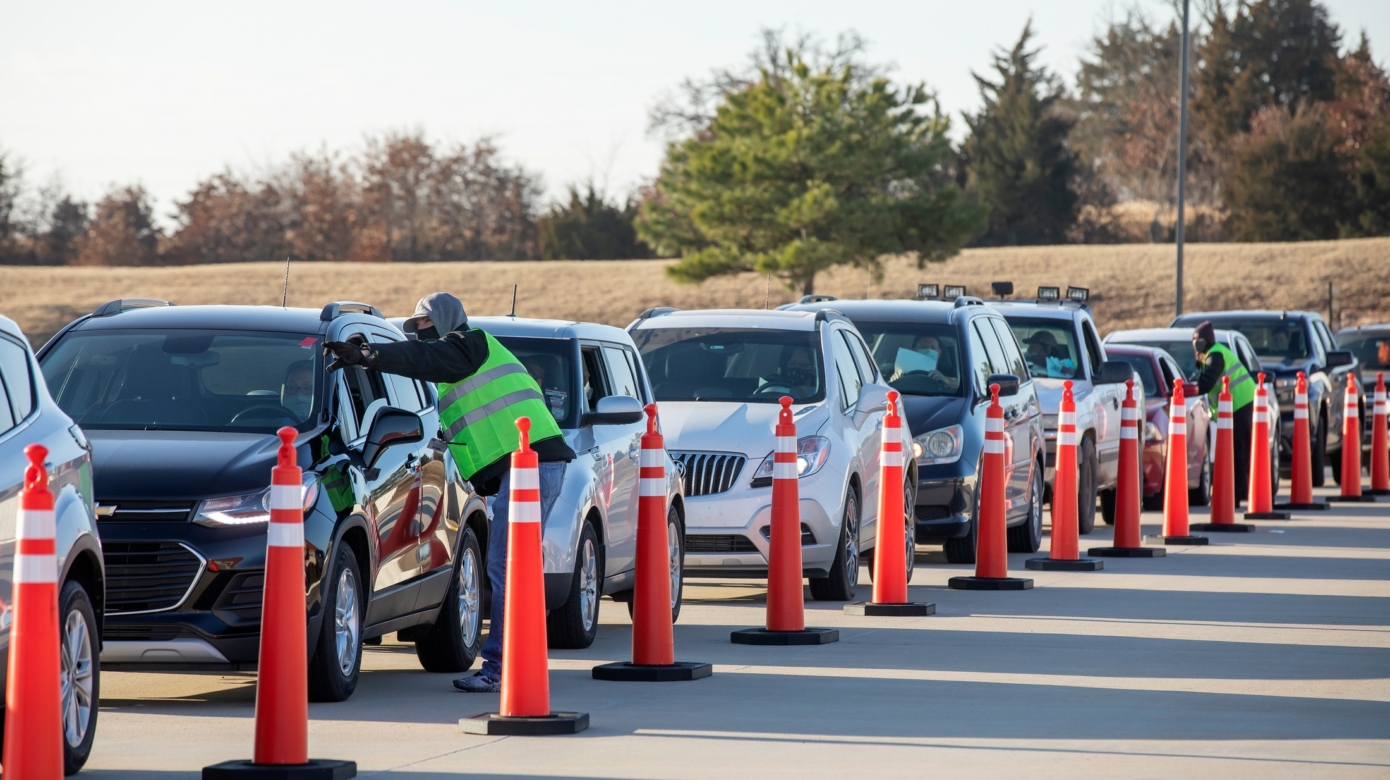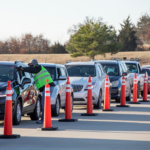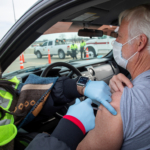The past year presented extreme challenges for public health professionals and first responders. When the pandemic began, agencies across the United States scrambled to find enough personal protective equipment for those on the front lines treating patients. Following the rise in cases through summer and fall 2020, officials in these sectors turned their focus on sorting logistics for mass coronavirus testing drives. As the winter spike in cases raged throughout the country, they then geared up for what many hope will be the final stage of this pandemic — mass vaccination drives.
Administering the first vaccines as they became available posed severe logistical challenges that federal, state, local and tribal professionals had to navigate. For instance, the Pfizer vaccines, the first approved in the U.S., required ultra-cold storage that many public health providers could not readily afford. Strained supply chains on syringes and the significant number of health professionals needed to administer vaccines were additional complicating factors.
“This isn’t as simple as just sticking a person with an injection,” Citizen Potawatomi Nation Tribal Chairman John “Rocky” Barrett said in a February op-ed. “It takes months of planning and millions of dollars that wouldn’t be in the state without the presence of tribes.”
CPNHS began administrating doses of the vaccine in December, just hours after they received the first Pfizer shipment. By February CPNHS has administered more than 3,000 doses. These events involved dozens of staff and hundreds of patients who either drove or walked through quickly established vaccination events. For someone in the middle of this logistical challenge, like CPN Tribal Emergency Manager Tim Zientek, the key to the Tribe’s success is a culmination of years of preparedness and practice.
“I would rate our challenge for mass vaccination drive about at 5 out of 10,” he said. “Collaborating with the Pottawatomie County Health Department and surrounding communities, the Pottawatomie County Mass Immunization Plan has been a joint exercise every year since 2005. As a ‘push partner’ with the county health department, CPN Health Services works directly with them and the state health departments to develop and manage mass immunizations.”
Years of running through various practice scenarios and attending conferences for Tribal emergency management professionals like Zientek proved beneficial as CPN opened vaccine drives to the general public in mid-March. CPNHS’ collaboration with external entities in recent years also provided a framework to shape the response.
“CPNHS has for a number of years been holding flu vaccination drive-thrus for the local communities,” Zientek said. “This gave us the practice to adjust the size and scope of the vaccine drives. Partnering with the local communities has also been a huge help as we continue to work together to improve from each drive.”
In emergency management, the key to handling swiftly moving, life-threatening situations is being ready for the unthinkable. Describing the events of the last year to your average Citizen Potawatomi in January 2020 would likely have left some blank stares. For emergency managers at all levels, bracing for the indescribable is just a training exercise. The government often tasks the Federal Emergency Management Agency with preparing for the worst, and FEMA shapes its mission around The National Preparedness Goal.
It focuses on creating “a secure and resilient nation with the capabilities required across the whole community to prevent, protect against, mitigate, respond to, and recover from the threats and hazards that pose the greatest risk.”
Zientek collaborated closely with the FEMA Region 6 Tribal Relations Specialist Rachel Nutter. This cooperation proved integral to creating successful federal, state, tribal and local resource partnerships.
FEMA is currently partnering with more than 90 tribes across the U.S. as a result of their COVID-19 emergency declarations. In March 2020, CPN’s emergency declaration paved the way for the Tribe and FEMA Region 6’s teamwork. Six medical personnel from the FEMA region served on 60-day deployments to assist with CPN’s mass vaccination efforts, while 23 tribes across Oklahoma, Louisiana, Texas and New Mexico have received similar support.
Nutter previously worked for the Choctaw Nation and spent 10 years involved with the Oklahoma Intertribal Emergency Management Coalition, which Zientek chairs. FEMA created her position in November 2019 to focus on more traditional needs of the country’s National Preparedness Goal. That all changed in March 2020.
“For COVID, we have assisted the tribal nations with plan development, PPE donation coordination, vaccination staffing support, resource requests and reimbursement for COVID-19 eligible emergency protective measures under the FEMA Public Assistance Program,” she said. “I feel honored to continue working with tribal nations to provide information and coordination on FEMA programs to support their emergency management capacity building.”
For Zientek, having a former tribal emergency planner on the federal side who understands the challenges he and his ITEMC colleagues face, the collaboration has been a Godsend. Following the approval from FEMA on CPN’s emergency declaration, he and Tribal staff here crafted an administration plan that, when approved by Region 6, allowed for an open line of resources.
“Once it was approved, we could then go directly to FEMA for resources including PPE, disinfectants and even manpower,” Zientek said. “The administrator at FEMA R6 assembled a team of staff members to work specifically with tribal nations to obtain whatever resources was needed. They even worked with outside vendors to find those who could provide us the supplies we needed when we asked.”
As April begins, CPN has administered more than 13,000 doses at its clinics and mass vaccination drives. In a county of 72,000, this is a small but significant impact on the area’s vulnerable populations. Through collaboration with FEMA and other tribal nations in the state, those response efforts will continue to benefit mostly rural communities hit hardest by the pandemic in Oklahoma. The pandemic again demonstrated the impact tribes have on the communities within their historic jurisdictions.



